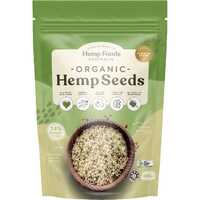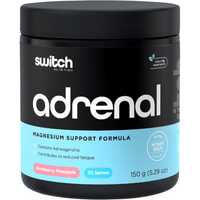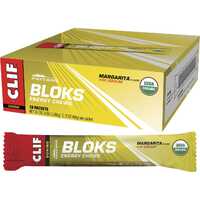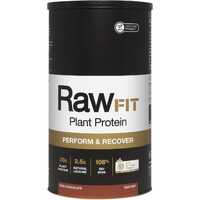There is a vital link between physical activity and dietary intake. Whether you're an everyday fitness enthusiast or a seasoned professional athlete, eating the right foods at the right times helps to maximise all aspects of performance. People consume a variety of foods in an effort to reach their physical peak, from carbohydrates and proteins to healthy fats, vitamins, and minerals.
Let's dive deep into the wonderful world of sports nutrition, from its fascinating history to specific nutritional categories and guidelines. This article will be split into two parts, with specific foods, supplements, and products mentioned in part 2.
What is Sports Nutrition?
Sports nutrition is the study and practice of nutrition and how it affects athletic performance. The foods we eat impact every aspect of fitness, from training and performance to recovery and injury prevention. This field is also known as exercise nutrition due to the close relationship that exists between exercise physiology and nutrition.
History of Sports Nutrition
The history of sports nutrition is probably much shorter than you think. While people have always eaten certain foods to fuel their bodies, we have not always understood the intricate links between nutrition and physical performance. More than anything else, it was the development of science that helped this field to flourish in the 20th century. Instead of relying on folk diets and questionable exercise regimes, modern fitness decisions could now be based on a proper understanding of the human body.
An interesting story from 1904 highlights just how far we've come in just over a century:
In the Games of the III Olympiad held in St. Louis, USA, Thomas Hicks won gold in the marathon. He only just made it over the line, however, and he was unable to receive his trophy due to medical distress. There were only two locations along the route designated for water, and towards the end of the race, Thomas was dealing with the onset of dehydration. He asked for more water but was instead given a wet sponge to suck on and the white of an egg. That didn't do the trick, and over the next few kilometres, he was given more eggs, multiple shots of brandy, and even a small dose of strychnine. It's amazing that he managed to finish the race and even more amazing that it was held a little more than 100 years ago.
Sports nutrition developed over many decades, with the first formal studies taking place in Sweden in the late 1930s. Swedish scientists started studying carbohydrate and fat metabolism during this time, and even today, this remains a hot topic for sports scientists. Studies continued over the decades, although at a much slower pace than today. By the late 1960s, Scandinavian scientists were studying advanced topics like muscle glycogen storage and resynthesis. Among other things, we learned more about how the human body reacts to macronutrients and micronutrients under stress and which foods were advantageous in particular situations.
Around the same time in the United States, a scientist working at the University of Florida developed a new beverage for the school's football team. His name was Dr. Robert Cade, and the name of the drink — Gatorade — was a blend of his name and the school's mascot. By the 1970s, the sports industry and the world of science were both booming. In the United States and all over the world, new exercise physiology laboratories were funded at universities to study professional and amateur athletes. Emerging knowledge fuelled new opportunities, with the academic field known as sports nutrition finally taking shape in the 1980s.
Early studies were mostly limited to endurance athletes, but the field slowly spread to become what it is today. Huge advances were made in the 1990s, as more knowledge was made accessible to amateur athletes and fitness enthusiasts. Everyday people were interested in a range of physical activities, including resistance and conditioning programs, aerobic exercises, and strength training. From carbohydrates, proteins, and fats to vitamins and minerals, scientists helped athletes to learn more about food and unlock new levels of physical performance.
Basic Nutritional Categories
Before we look at diet recommendations for specific training regimes, it's important to understand the basics of nutrition. While it can seem complicated, nutritional guidelines are formed from a few basic building blocks. Most foods contain a combination of carbohydrates, protein, and fat, with these basic elements known as macronutrients. Some foods are high in a specific macronutrient, and others include a balance of two or three. Most foods also contain vitamins and minerals, with these elements referred to as micronutrients. Together, these macronutrients and micronutrients form the basis of all diets.
Macronutrients
There are three macronutrients, and each one has an important role to play in sports nutrition. Carbohydrates provide glucose for immediate energy, protein provides amino acids for growth and structure, and fats contain fatty acids for energy storage and transportation. Whether you're training for a marathon or just trying to make it to the gym, planning your intake of macronutrients can have a huge influence on your results. For example, lots of people choose to eat high-carb meals before working out, with protein and carbs combined post-workout and healthy fatty meals spread throughout the week.
Micronutrients
There are two types of micronutrients, with most foods containing differing amounts and combinations of vitamins and minerals. While our bodies need much lower quantities of micronutrients than macronutrients, they're just as essential when it comes to physical performance.
- Vitamins include water-soluble and fat-soluble vitamins, with the former providing immediate benefits and the latter providing long-term support. B vitamins and vitamin C are water-soluble, and they need to be consumed every day. Vitamins A, D, E, and K are fat-soluble, and they are needed every few days.
- Minerals include microminerals and trace minerals, and once again, both are essential. Microminerals support healthy muscles and bones, and they also help to control blood pressure. Examples include calcium, magnesium, sodium, and potassium. Trace minerals are necessary for your muscles and nervous system, and they also help with cell repair. Examples include iron, manganese, copper, zinc, and selenium.
Nutritional Guidelines for Training Routines
The foods we eat have a direct effect on athletic performance and recovery. They also impact injury management and the long-term sustainability of fitness regimes. While nutrients affect everyone in a similar way, it's important to develop a tailored diet based on your age, current level of fitness, and long-term fitness goals. Whether you want to shape up, bulk up, or speed up, the foods you eat need to meet the demands of your training routine.
A reciprocal relationship exists between nutrition and the intensity of sports participation. Frequent or intense participation creates additional nutritional requirements, and less frequent or intense participation has fewer nutritional demands. The following dietary recommendations are applicable, based on information from "Sports Nutrition for the Recreational Athlete," published in the Australian Journal of General Practice:
Easy training
Following a diet for easy training routines or weight management involves a mixture of 50% vegetables and fruits, 25% whole grains, and 25% lean protein. If you want to lose weight, whole grains should be limited to around 15% and protein increased to around 35%. Whole grains include things like pasta, rice, potatoes, cereals, and breads. Fruits and vegetables include raw and cooked veggies, fresh fruits, and veggie-based soups. Lean protein includes poultry, meat, and fish, along with eggs, dairy/soy, legumes, and nuts/seeds. Along with these basic foods, 1-3 teaspoons of healthy fat is recommended per day, along with water, other beverages, and flavours.
Moderate training
If you follow a moderate training regime, you need a mixture of 40% vegetables, 35% grains, and 25% lean protein. While fruits are also mentioned, fresh, stewed, and dried fruit intake should be minimal. Whole grains include pasta, rice, potatoes, cereals, and breads. Vegetables include raw and cooked veggies and veggie-based soups. Lean protein includes poultry, beef/game/lamb, and fish, along with eggs, low-fat dairy, soy, legumes, and nuts. One tablespoon of healthy fat is recommended, along with water, other beverages, and flavours like herbs, spices, and sauces.
Hard training
If you're interested in following a hard training routine, it's important to eat the right foods. This includes a mixture of 50% grains, 25% vegetables, and 25% lean protein. Once again, fruit intake should be relatively minimal to avoid excessive sugars. Whole grain intake doesn't change between intensity levels, with pasta, rice, potatoes, cereals, and breads all applicable. Vegetables include raw and cooked veggies, along with veggie-based soups. Lean protein includes poultry, meat, and fish, along with eggs, low-fat dairy/soy, legumes, and nuts/seeds. More fat is needed for hard training at 2-3 tablespoons, along with water, other beverages, and flavours.
If you're looking for high-quality health food products to give your performance a boost, Healthy Being has everything you need. Please browse our website, make an order, or contact our team to learn more.
Click here to read Part 2 of this article in which we'll look at various training motivations, including things like weight loss, strength training, and functional training. We'll also review diet strategies based on macronutrients and list specific foods, supplements, and products to help you meet your fitness goals.


 Certified Organic
Certified Organic Vegan Friendly
Vegan Friendly  Vegetarian
Vegetarian Organic Ingredients
Organic Ingredients Dairy Free
Dairy Free Gluten Free
Gluten Free Keto Friendly
Keto Friendly

































